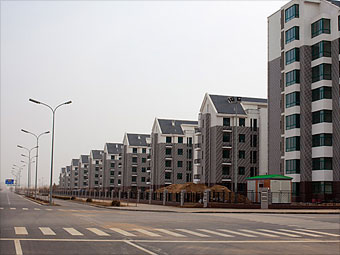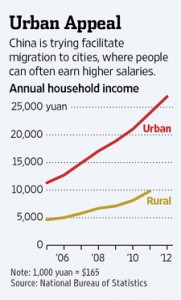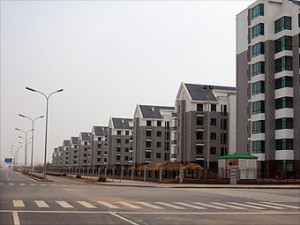March 25, 2014 – The great human engineering experiment in China continued last Sunday with the country unveiling its transition to an urban-centered future. In the past decade for the first time China’s urban population has exceeded 50%. That’s up from 36% in the year 2000, a a significant change for a country that was largely rural-based for so many centuries.
And the government of China in its modernization drive intends to see that trend accelerate to more closely match population distribution in the Developed World which today stands at 80% urban to 20% rural. The first milestone is to reach 60% urban by 2020. To do this the government intends to move 100 million migrant workers into cities providing them with permanent residences. This will include urban renewal in major cities as well as a commitment to develop small and medium-sized cities and provide the necessary services, infrastructure and jobs to meet the population’s needs.
The government in announcing its urban plan is committed to “harmonious and pleasant living conditions….pursuing better ecology, more clean air and safe drinking water” as reported by the Xinhuanet News Agency.
The world has never witnessed human engineering on such a scale. The government sees the building of new cities and urban infrastructure as critical to driving growth within the domestic economy. The move from rural to urban settings is seen as a powerful agent for income growth for individual Chinese (see the graph below).
But all is not paradise in this great experiment. Cities and apartment blocks that emerge from nothing appear like “ghost cities” empty of population and traffic like the one in the picture below. With no jobs there is great reluctance on the part of China’s population to move from small farms and rural plots to economic uncertainty in these modern equivalents to ghost towns.
For many Chinese the state of China’s current cities provides little comfort. Enveloped by pollution from coal-fired power plants and traffic, China’s cities today represent the country’s greatest environmental threat. Studies show that air pollution is reducing the life expectancy for some 500 million living in Northern China by an average of 5.5 years. What will more urbanization do?














